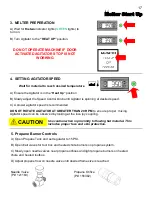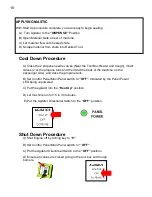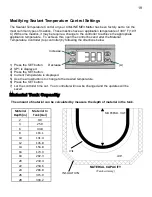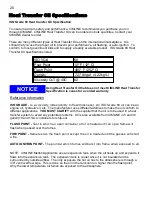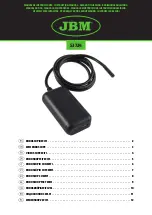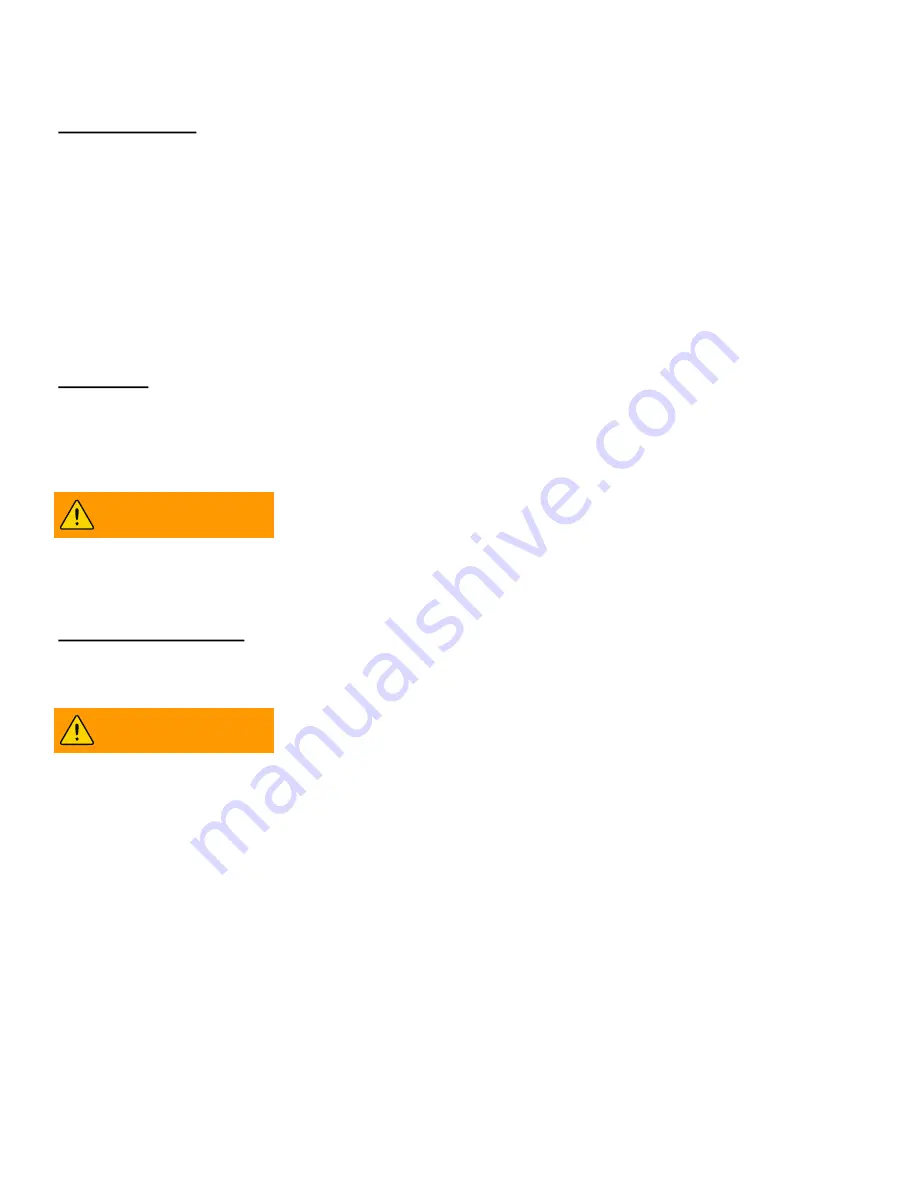
6
Wheels
Wheel Selection
When specifying or replacing your trailer wheels it is important that the wheels, tires, and axles are
properly matched. The following characteristics are extremely important and should be thoroughly
checked when replacement wheels are considered:
1.
Bolt Circle.
Wheels have many bolt circle variations and some are so close that is could
be possible to attach an inappropriate wheel that does not match the axle hub.
2.
Capacity.
Wheel load capacity should match tire and trailer max. load ratings.
3.
Offset.
The relationship of the center line of the tire to the hub face of the axle should
match any replacement. Failure to match offset may result in reducing the carrying capacity of
your axle.
4.
Rim Contour.
Replacement wheels should be direct replacements to match the rim
contour
Inspection
All the components of your suspension system should be visually inspected for signs of wear,
damage, or loose fasteners at least every 6,000 miles. When replacing or tightening loose fasteners,
consult the torque chart for correct torque values. Worn spring eye bushing or sagging or broken
springs should be replaced.
WARNING
Use only rim contours suggested by manufacturer. Failure to use
correct rim contour may cause dramatic separation of tire and wheel
and could cause serious injury or death.
Attempting to modify or repair a wheel can cause unsafe conditions
that may result in an explosion. Air pressure on a weakened or cracked
rim can cause serious injury or death.
Torque Requirements
It is extremely important to apply and maintain proper wheel mounting torque on your trailer axle.
Torque wrenches assure the proper amount of torque is being applied to a fastener. Use no other
WARNING
Proper and accurate torque must be maintained to prevent wheels
from loosening, studs from cracking and/or breaking or other possible
hazardous breakage resulting in serious injury or death.
Be sure to use only the fasteners matched to the cone angle of your wheel (usually 60° or 90°) The
proper procedure for attaching your wheels is as follows:
1. Start all bolts or nuts by hand to prevent cross threading.
2. Tighten bolts or nuts in the following sequence.
3. Tightening fasteners should be done in stages. Follow the recommended sequence, tighten
fasteners per wheel torque requirements diagram (see next page).
4. Wheel nuts/bolts should be torqued before first road use and after each wheel removal. Check
and re-torque after the first 50 miles and again at 100 miles. A periodic check during regular
service is recommended.
Summary of Contents for ME3
Page 15: ...15 Sub Control Panel Controls and Their Functions 1 2 3 4 6 7 8 5 ...
Page 34: ...34 Trailer Wiring Diagram ...
Page 39: ...39 Burner Internal Wiring Diagram ...
Page 43: ...43 Mastic Hydraulic Manifold Components ...
Page 44: ...44 Hydraulic Schematic ...
Page 49: ...49 Miscellaneous Parts 28 29 30 30 ...
Page 51: ......
Page 52: ...52 2601 Niagara Lane Plymouth MN 55447 763 557 1982 800 328 3874 Fax 763 557 1971 ...

















